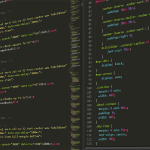In the modern digital landscape, capturing a user’s attention and retaining it has become increasingly challenging. As designers and developers, we’re constantly seeking innovative ways to create engaging and enjoyable experiences for our users. One of the most effective techniques has emerged in the realm of motion UI development. By leveraging animations and transitions, we can enhance user engagement, creating dynamic and interactive interfaces that captivate users from the moment they land on a webpage or application. In this blog, we will explore the significance of motion in user experience design and highlight popular frameworks such as Motion UI and GreenSock that facilitate the creation of lively, engaging digital environments.
The Power of Motion in User Experience
1. Immediate Feedback
One of the primary purposes of using animations is to provide immediate feedback to users. When a user interacts with a button, a slight animation can signal that their action has been recognized. This immediacy fosters a sense of control and satisfaction, reducing frustration and increasing user satisfaction. For example, a button that slightly enlarges when hovered or clicked can communicate that the interaction was successful.
2. Visual Guidance
Motion can serve as a guiding mechanism, helping users navigate through a site or app. Transitions can smoothly indicate changes, drawing attention to new content or features and ensuring users are aware of the actions they can take. Consider a user who has completed a task; an animated transition that celebrates the success—like a confetti explosion or a slightly zooming image of the completed task—can enhance their experience and encourage further engagement.
3. Storytelling and Emotional Engagement
Animations can enhance storytelling. They can convey complex information simply and clearly, capturing the user’s imagination and emotional engagement. For instance, a loading animation featuring the brand’s colors and logo can imbue a sense of anticipation and excitement, as opposed to a static loading wheel that can feel bland and indifferent. The artistry of motion combined with content can boost the overall impact.
4. Creating a Unique Brand Identity
Motion UI allows brands to infuse their personality into the user experience, making interactions memorable. Custom animations that reflect a brand’s values or character can leave lasting impressions, fostering loyalty and encouraging users to return. When done well, animations can become core elements of a brand’s identity, making it instantly recognizable to users.
Frameworks for Motion UI Development
With the increasing importance of motion in UI design, numerous frameworks have emerged to assist developers in creating captivating animations. Two leading options are Motion UI and GreenSock.
1. Motion UI
Motion UI, developed by ZURB, is a Sass library designed specifically to help developers implement animations and transitions easily. It comes with pre-built transitions that can be applied to various UI components with minimal effort.
Key Features:
- Ease of Use: The library offers predefined classes and a simple syntax, enabling quick implementation.
- Responsive Design: It ensures that animations look good on any device, enhancing the user experience across different screen sizes.
- Customizable: Developers can create unique animations by modifying the built-in transitions or writing their own styles.
Motion UI is particularly effective for creating attention-grabbing effects in a simple, user-friendly manner, making it an excellent choice for designers looking to integrate motion into their projects without overwhelming complexity.
2. GreenSock (GSAP)
GreenSock Animation Platform (GSAP) is a powerful JavaScript library for creating high-performance animations. Renowned in the industry for its robustness and flexibility, GSAP allows developers to animate virtually any element on the web with seamless executions across all browsers.
Key Features:
- Performance Efficiency: GSAP is optimized for performance, ensuring smooth animations even with multiple elements animating simultaneously.
- Rich Functionality: It supports a comprehensive range of animations, including timelines, staggered animations, and even physics-based movements, providing a level of control unmatched by other libraries.
- Cross-Browser Compatibility: One of GSAP’s standout features is its compatibility with various browsers, ensuring that animations render consistently everywhere.
GSAP is ideal for more complex animation requirements or when intricate control over timing and motion is necessary. Its versatility makes it a favorite among seasoned developers.
Final Thoughts
Incorporating motion UI development is no longer an add-on; it has become a critical component of effective digital design. By using tools like Motion UI and GreenSock, designers can craft engaging, interactive experiences that not only appeal visually but also significantly enhance user engagement.
As the digital landscape evolves, harnessing the power of animations and transitions will remain essential. So, whether you’re designing a simple landing page or a comprehensive web application, remember that a little movement can go a long way in captivating your audience and providing an exceptional user experience. Dive into motion UI development today and watch your user engagement soar!




